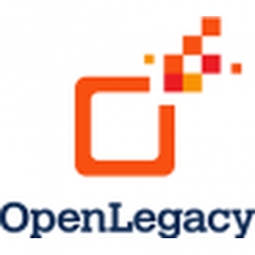
Technology Category
- Application Infrastructure & Middleware - Middleware, SDKs & Libraries
- Networks & Connectivity - Gateways
Applicable Industries
- Consumer Goods
- Finance & Insurance
Applicable Functions
- Product Research & Development
- Sales & Marketing
Use Cases
- Machine to Machine Payments
- Time Sensitive Networking
Services
- System Integration
The Customer
Citibanamex
About The Customer
Citibanamex, founded in 1884, is a part of Citibank corporation. With 40,000 employees and tens of millions of customers, the bank processes over 40% of total transactions in Mexico. The bank was committed to a digital transformation to keep up with the dynamic, rapidly evolving Mexican consumer banking market. The bank's primary goal was to deliver a seamless, personalized user experience across both digital and traditional channels. The bank's core technology stack was a proprietary mainframe system, which ran core business applications such as payments and account management.
The Challenge
Citibanamex, a part of Citibank corporation, was facing a challenge in keeping up with the rapidly evolving Mexican consumer banking market. The bank's primary goal was to deliver a seamless, personalized user experience across both digital and traditional channels. The bank's mobile application rating was a mere 2.0 out of 5, indicating a need for innovative digital offerings to improve the user experience. The bank's core technology stack was a proprietary mainframe system, which ran core business applications such as payments and account management. Over time, modernization projects led to an increasing spiral of complexity with various tools, mainframe gateways, ESBs, middleware, dispatchers, routers, and messaging queues. Each system had a different way of handling the backend legacy platform, making it harder and more cumbersome to integrate with legacy applications. After years of unsuccessful, costly integration attempts, Citibanamex was left with the same needs and challenges, only exacerbated. The focus shifted to the Customer Digital Experience and the End-User Journey, and they needed a partner that could help them rapidly develop and deploy innovative customer offerings on top of their core systems.
The Solution
Citibanamex approached OpenLegacy to expose all of their core banking applications, including Account Opening, Checking and Debit Accounts, Consumer Credit (Personal, Autos, Mortgage), Payments and Investments. OpenLegacy's connector for the mainframe environment, combined with its COBOL parser and automated API generator, resulted in a working prototype exposing six real-world mainframe business flows as APIs. The prototype only took two weeks to complete. It bypassed their Tibco middleware and messaging technologies, and instead connected directly with the mainframe environment. The new APIs generated by OpenLegacy were tested and deployed using the bank’s existing environment, to ensure that they function properly in the current infrastructure as well as follow the bank’s internal integration standards. The development was done using modern, scalable, open architecture (such as REST API) and development methodologies (Agile, Scrum) – complying with the bank’s requirements.
Operational Impact
Quantitative Benefit

Case Study missing?
Start adding your own!
Register with your work email and create a new case study profile for your business.
Related Case Studies.
.png)
Case Study
Improving Vending Machine Profitability with the Internet of Things (IoT)
The vending industry is undergoing a sea change, taking advantage of new technologies to go beyond just delivering snacks to creating a new retail location. Intelligent vending machines can be found in many public locations as well as company facilities, selling different types of goods and services, including even computer accessories, gold bars, tickets, and office supplies. With increasing sophistication, they may also provide time- and location-based data pertaining to sales, inventory, and customer preferences. But at the end of the day, vending machine operators know greater profitability is driven by higher sales and lower operating costs.

Case Study
Series Production with Lot-size-1 Flexibility
Nobilia manufactures customized fitted kitchens with a lot size of 1. They require maximum transparency of tracking design data and individual processing steps so that they can locate a particular piece of kitchen furniture in the sequence of processes.

Case Study
American Eagle Achieves LEED with GE LED Lighting Fixtures
American Eagle Outfitters (AEO) was in the process of building a new distribution center. The AEO facility management team decided to look at alternate options for lighting layout that could provide energy and maintenance savings. AEO would need a full-time maintenance employee just to replace burned-out fluorescent tubes.

Case Study
Real-time In-vehicle Monitoring
The telematic solution provides this vital premium-adjusting information. The solution also helps detect and deter vehicle or trailer theft – as soon as a theft occurs, monitoring personnel can alert the appropriate authorities, providing an exact location.“With more and more insurance companies and major fleet operators interested in monitoring driver behaviour on the grounds of road safety, efficient logistics and costs, the market for this type of device and associated e-business services is growing rapidly within Italy and the rest of Europe,” says Franco.“The insurance companies are especially interested in the pay-per-use and pay-as-you-drive applications while other organisations employ the technology for road user charging.”“One million vehicles in Italy currently carry such devices and forecasts indicate that the European market will increase tenfold by 2014.However, for our technology to work effectively, we needed a highly reliable wireless data network to carry the information between the vehicles and monitoring stations.”





